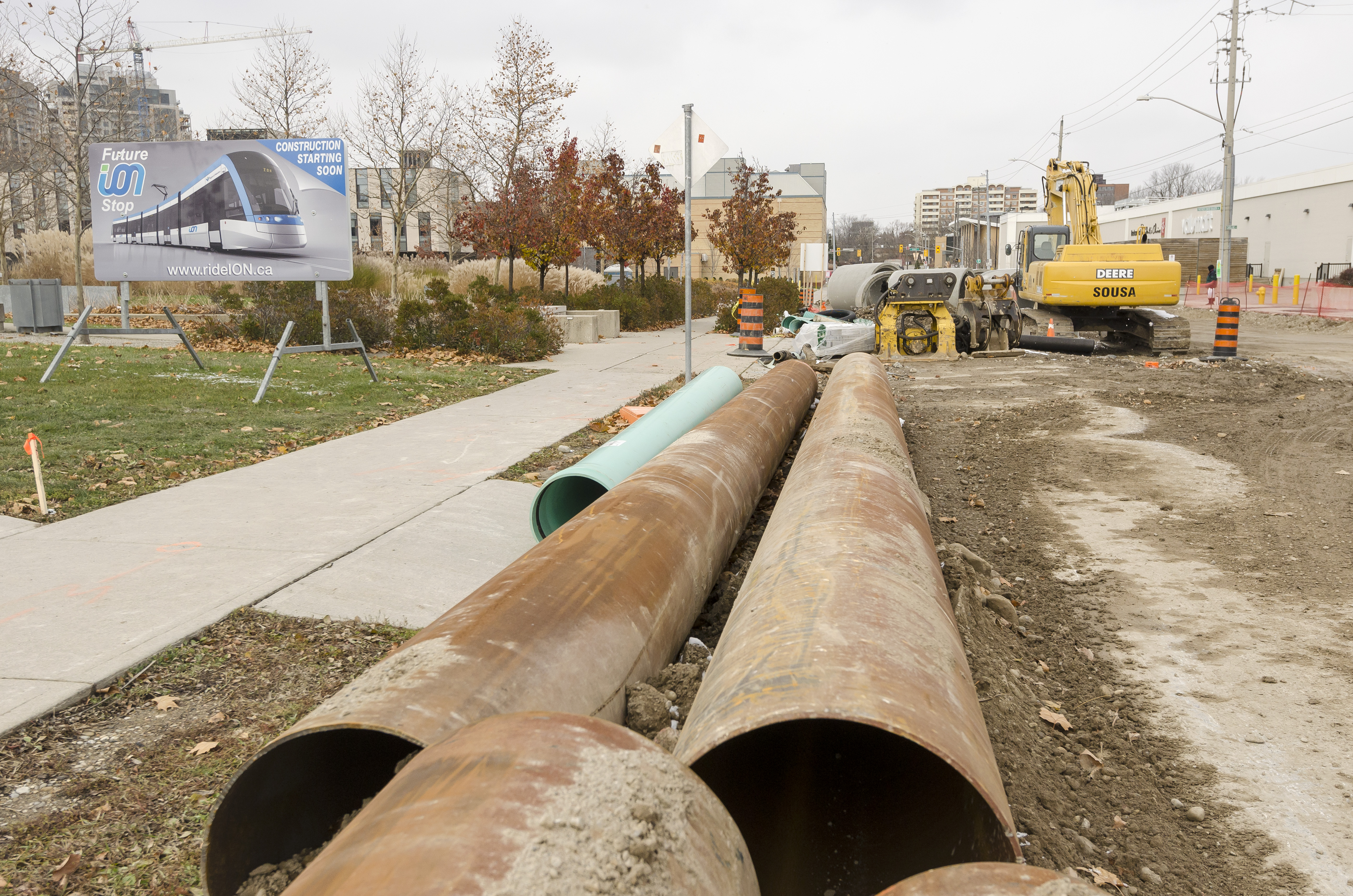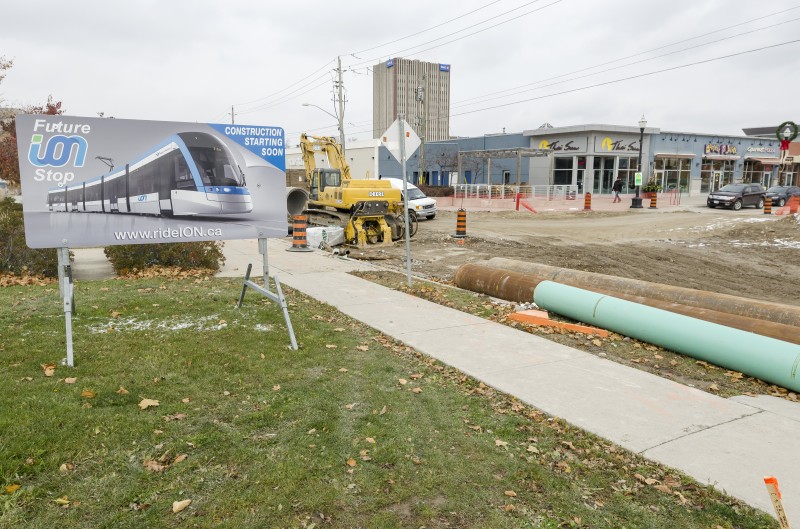Construction for ION underway

Early stages of light rail transit project beginning in Waterloo

The construction for the Region of Waterloo’s ION light rail transit project is underway and is expected to stay on schedule for completion in 2017. With the early stages of the project starting to pick up, residents in Waterloo may start to see noticeable signs of ION construction.
The project is a collection of transportation and infrastructure updates designed to increase the flow of people in the Kitchener-Waterloo area.
The project takes a two-pronged approach, not only creating a new electric light-rail transit train system, but also updating the more traditional transit approaches with the adapted bus rapid transit system.
“We’re in the initial stages where some construction has begun, but we’re still doing a lot of design,” said Darshpreet Bhatti, director of rapid transit at the Region of Waterloo.
“We’re hoping early next year the design stage will be finished, so we will be doing mostly construction.”
The light rail side of the project will require the construction of 19 kilometres of track, with various stations along the way.
The construction can be broken into several stages, which have already begun with moving utilities and will move on to ground work, laying physical track and finishing with infrastructure.
“Our construction so far has been focused on prep work and moving utilities,” said Bhatti.
“So next year is almost civil, moving utilities and laying track, and 2016 is finalizing that and moving surface equipment.”
Concerning the aBRT portion of the ION project, people in the K-W area should be seeing completion and rollout sometime in the next year.
The new rapid bus system requires 17 kilometres of new routes to be prepared, which means new road and infrastructure construction.
“On the aBRT side, construction is about 70 per cent done. We have a number of stations, and some of them are nearing completion and some are part way through completion,” said Bhatti.
“Expect to have it completely done early next year, and we are looking into how it can be unveiled as an ION project either in the spring or in the fall.”
Much concern has also been expressed about the financial nature of the project, as seen in the most recent municipal elections when a swath of candidates ran on the promise to stop the project. Even though many of the elected representatives in the K-W area are pro-LRT, the uneasiness with the project still lingers.
“It’s a fixed-fee build, so unless we start changing the scope, that is the cost it will take for us to complete the project,” said Bhatti.
“People have different expectations than the package that goes out and start asking for changes, and my role as the project manager is that we draw a reasonable balance. There will be certain things we can consider, but some might go beyond the scope. So unless council is willing to allocate the cost, my position will be that we cannot accommodate it.”
Other concerns surrounding the project have to do with possible construction delays. Although construction is currently on schedule to be completed by 2017 for light rail and 2015 for rapid bus transit, there is still time for an issue to arise that could potentially halt progress.
“You can always mobilize staff and purchase equipment early, but if the weather is not supportive then there’s only so much that can be done. This is a design build — this has a lump-sum cost, so GrandLinq is obligated and aware of their risk, so they will get the resources and the job done,” said Bhatti, referring to the company that is heading building and operating the project. “But, I would say if there’s one big factor, it’s inclement weather.”

